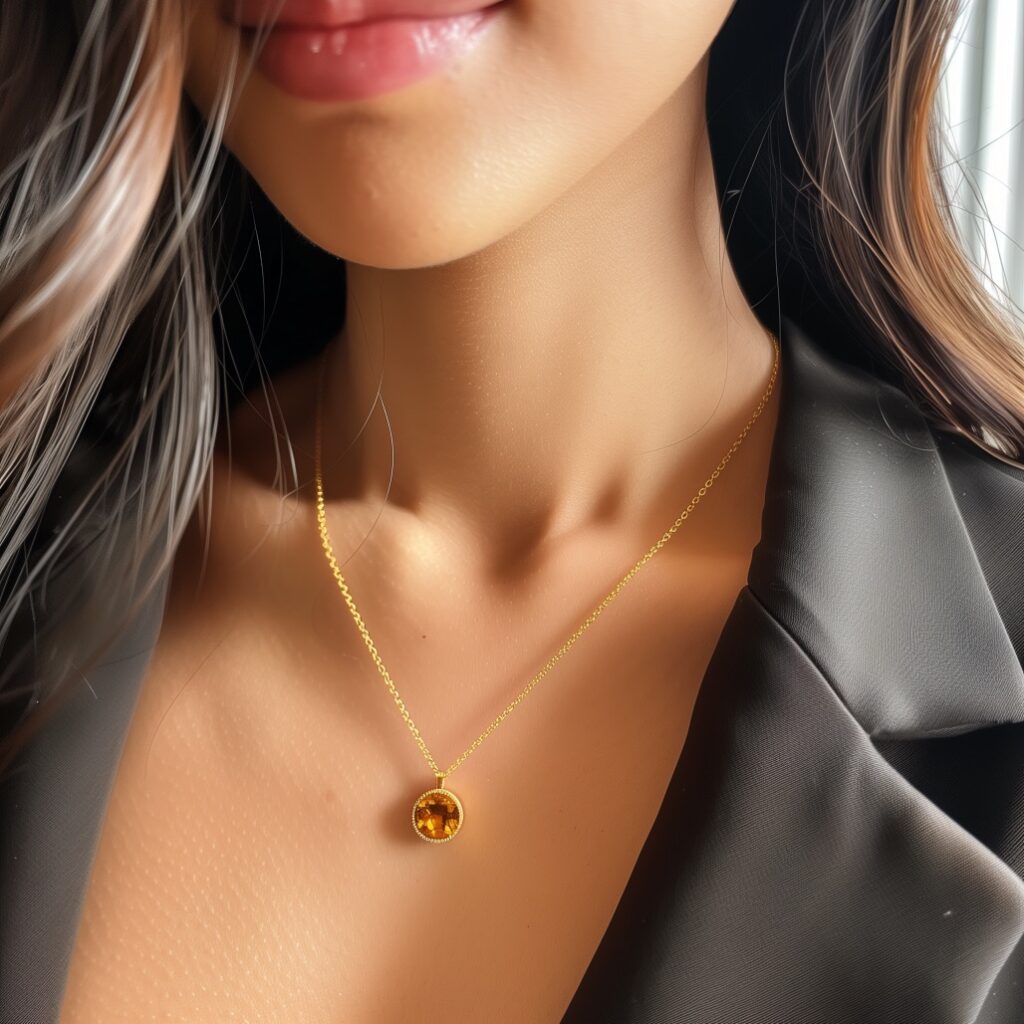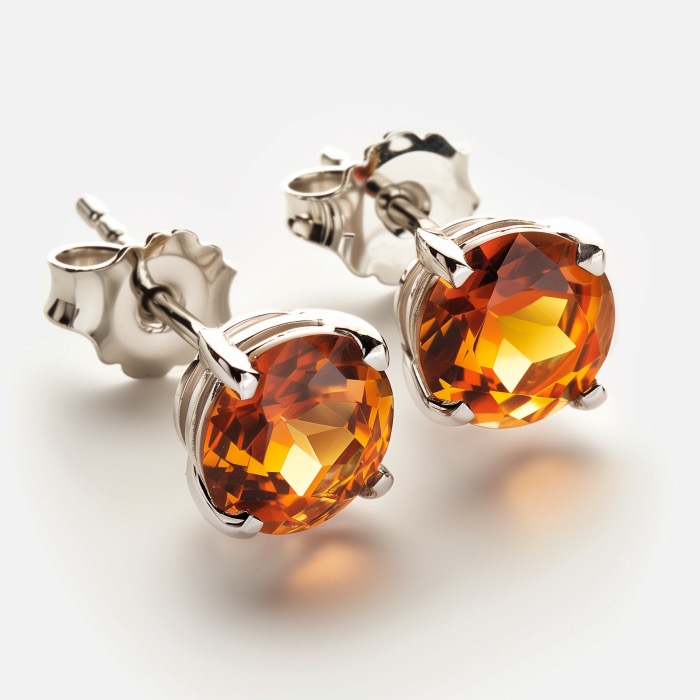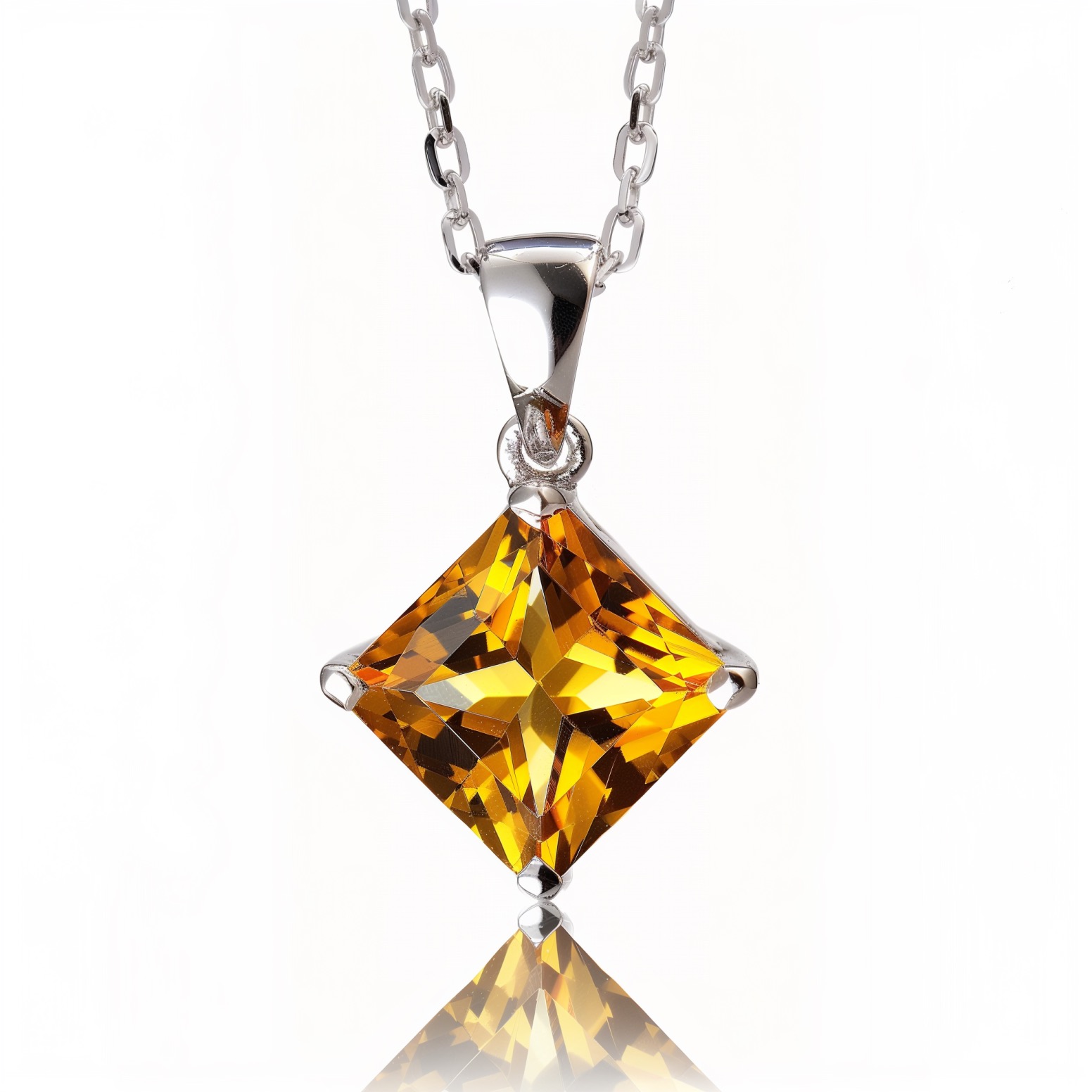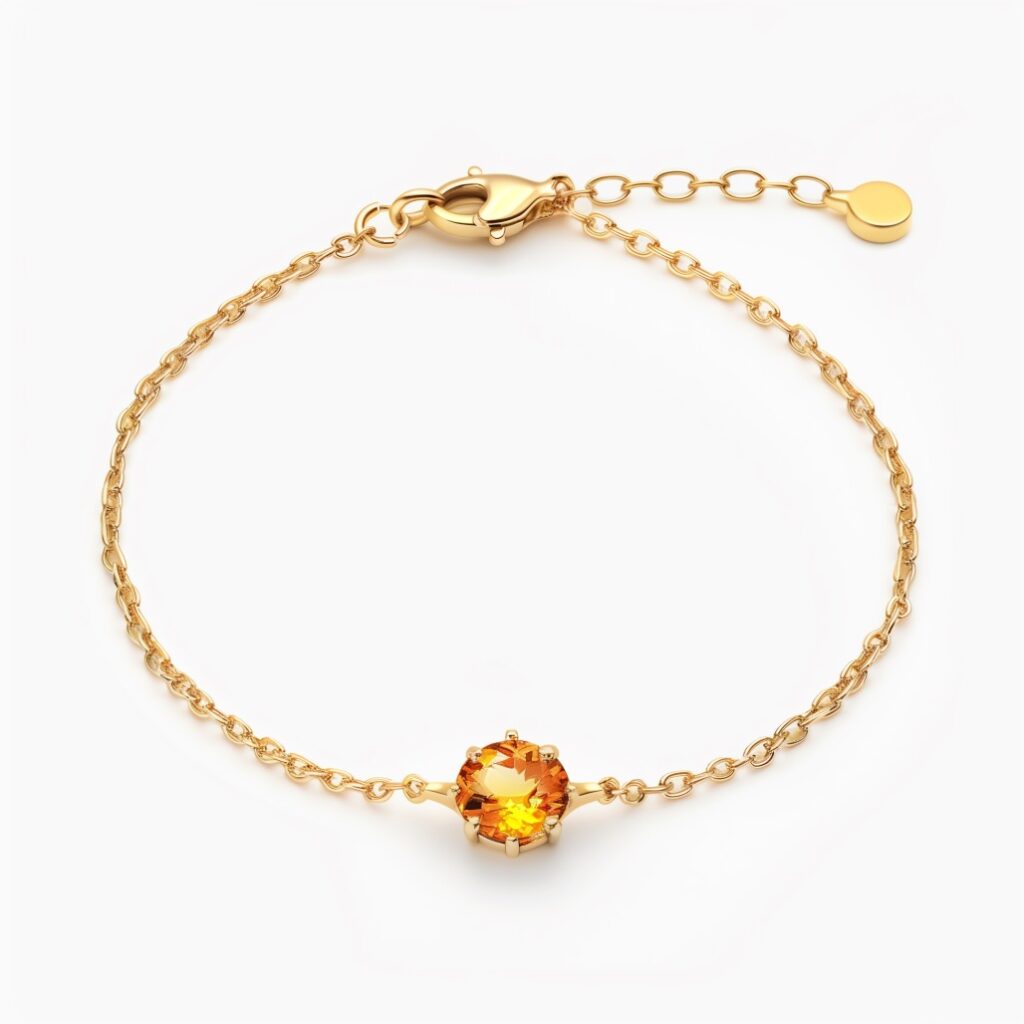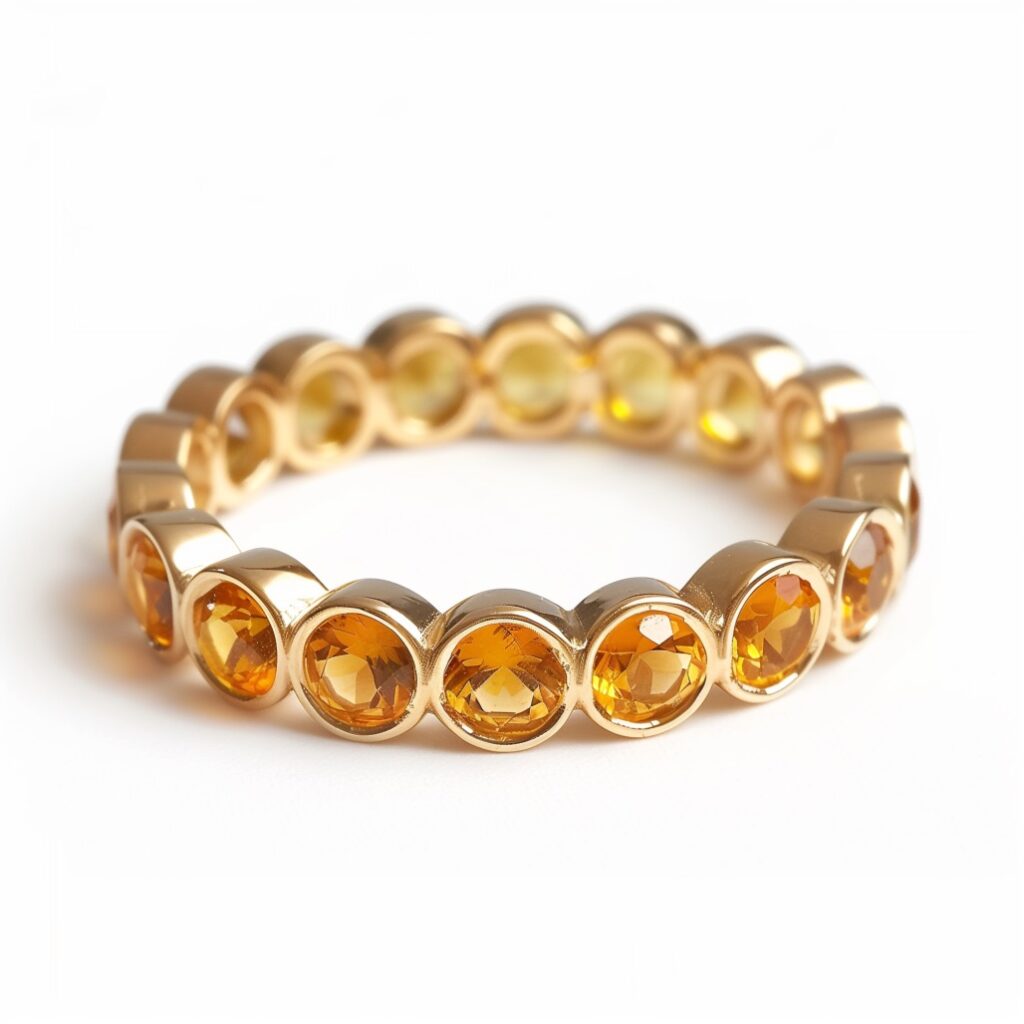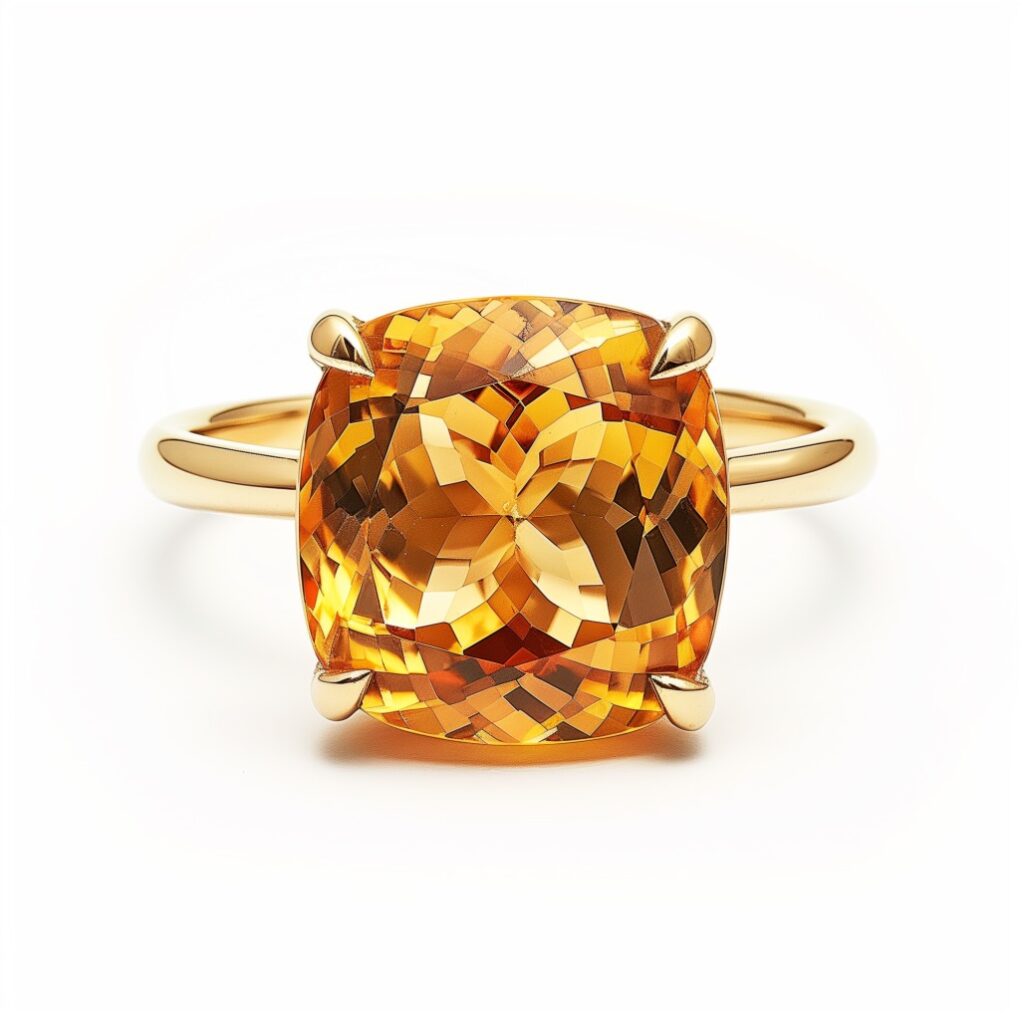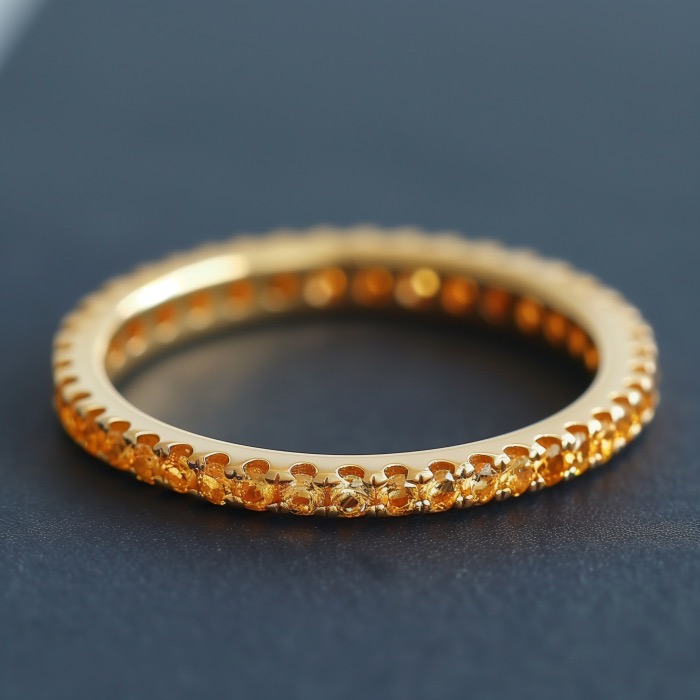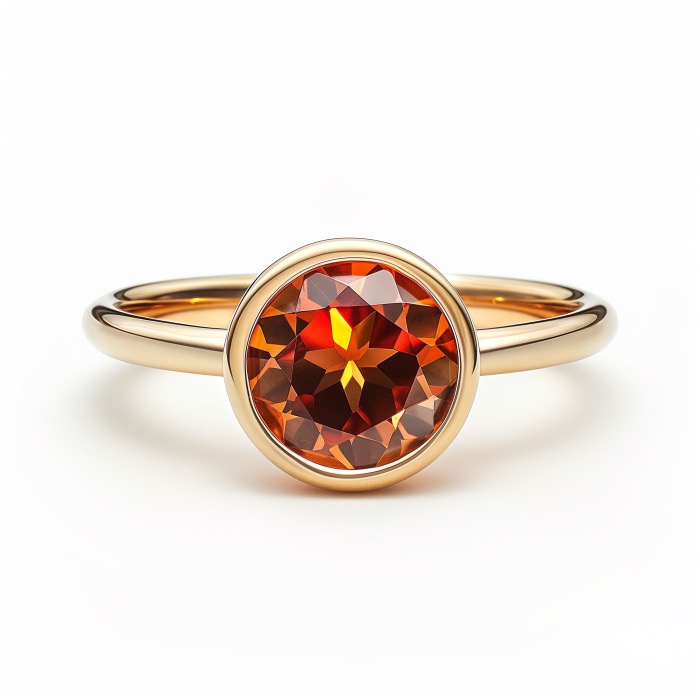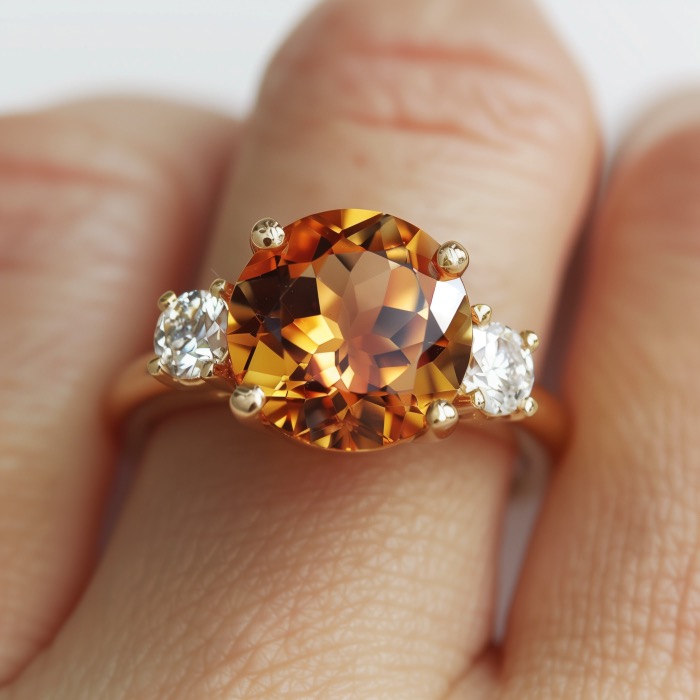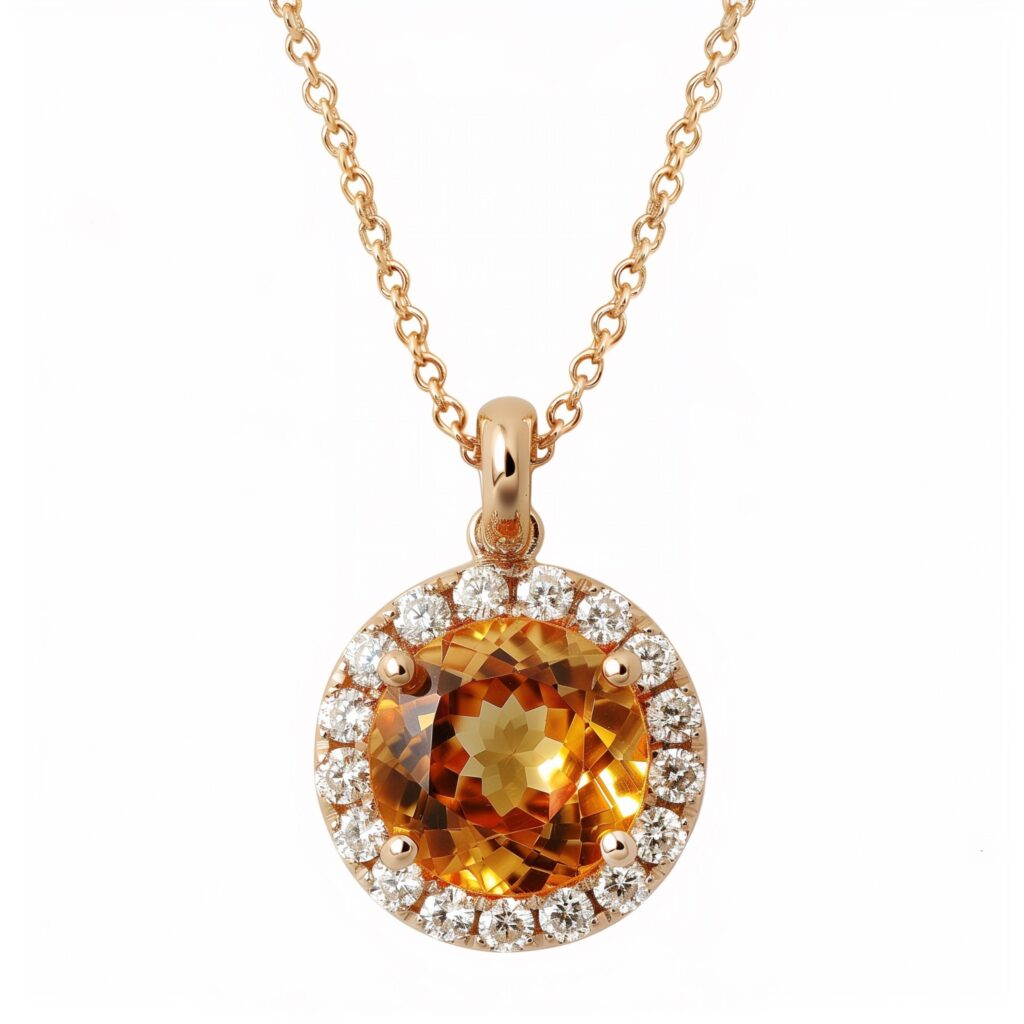Citrine Jewelry: Who Should Wear It & Why
Citrine is a sunny, warm quartz variety whose colors range from pale yellow to golden orange to brownish orange. A semi-precious stone with a glassy luster, citrine has long been associated with sunlight energy, creativity, joy and abundance. For thousands of years citrine has been used in jewelry and sumptuous royal adornments due to its beauty and ancient connection to the sun. It remains in high demand today, continuing to grow in popularity due to its color, durability, and wide range of reputed energetic properties within metaphysical and healing groups.
Table of Contents
Citrine Jewelry: Things to Know
What Is Citrine?
Citrine is a crystalline form of silica ~ also known as quartz ~ colored by iron. The amount of iron in the natural crystal determines its hue. Amethyst, smoky quartz, and clear quartz share the same chemical composition as citrine. Brazil produces vast amounts of citrine with a particularly appealing pale hue. Scotland, Russia, Madagascar, the United States and Mexico are other major sources.
Do Jewelers Use Only Natural Citrine?
Natural, untreated citrine is quite rare, so many citrine stones that are use in jewelry and ornamental pieces are actually heat-treated amethyst or smoky quartz. The heat treatment mimics the natural coloration process but accomplishes it in a much shorter time. Darker, saturated citrines of deep brown-orange or red-orange are very popular for today’s citrine jewelry.
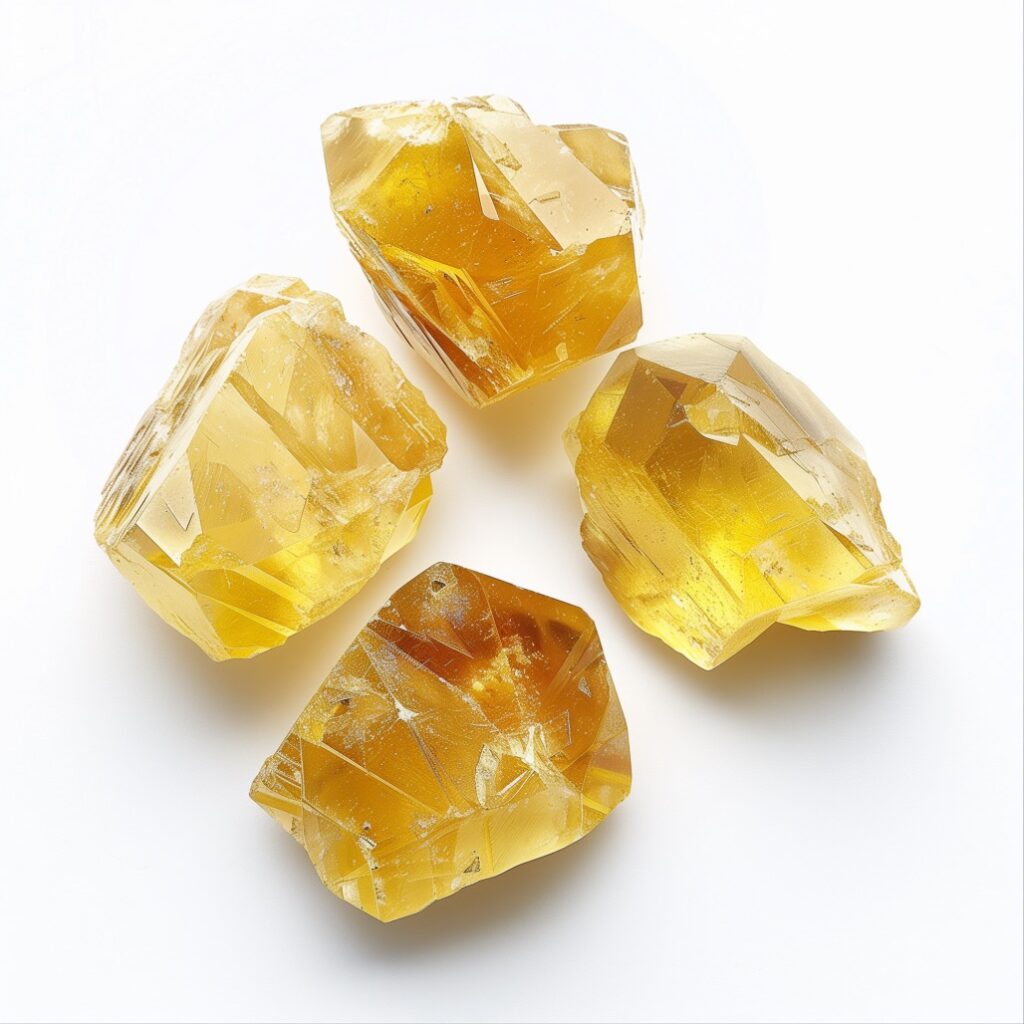


Can Citrine Be Worn Every Day?
Yes, citrine can be worn every day as it is a relatively hard and tough gemstone suitable for normal use. It is not invincible, however, so some care should be taken to keep it in pristine condition, as with most gems.
Durability & Toughness
Citrine is a relatively hard and durable gemstone with a score of 7 on the Moh’s hardness scale. It is resistant to scratches, chips, and other forms of everyday wear and tear, making it a stone that can withstand regular use without significant damage. Citrine is also tough: it resists fracturing or breaking when subjected to impact or stress. Its toughness helps make citrine a good choice for rings and other jewelry pieces that may face occasional knocks or bumps.
Low Maintenance Stone
Citrine is relatively low-maintenance and does not require special care or handling beyond routine cleaning and protection from harsh chemicals or extreme temperatures. Detailed instructions for maintaining your citrine jewelry can be found at the end of the article.
Citrine Jewelry: Affordable & Versatile
Affordable
Compared to other gemstones of similar color, such as imperial topaz or precious gemstones like rubies and sapphires, citrine is generally more affordable. This makes it accessible to a wider range of consumers and suitable for various budgets. Citrine’s wide availability contributes to its affordability: Brazil, Russia, Madagascar and other sources provide an abundant and steady supply to jewelry manufacturers and designers.
Versatile
Citrine jewelry can be found in many warm yellow and orange hues, with the most prized and valuable specimens displaying a rich, saturated orange hue. Its warm tones complement a wide range of skin tones and work well with many metals, such as yellow gold, rose gold, or sterling silver, for a range of aesthetic options. Citrine’s warm tones and durability make it suitable for a variety of jewelry styles, from classic and elegant pieces to more modern and contemporary designs. It is widely used rings, pendants, bracelets, earrings, and decorative pieces.
Best Settings & Cuts for Citrine Gemstones
Choosing the right setting for your citrine not only enhances its beauty but also protects it from potential damage. The appeal of citrine in jewelry design largely stems from its ability to be cut into various shapes that enhance its natural luster and color. The most common cuts include:
Citrine Jewelry Settings and Cuts
Gemstone Settings
- Prong Setting: The most common and classic setting, which allows the maximum amount of light to enter the stone, enhancing its brilliance. However, ensure the prongs are checked regularly as they can loosen over time.
- Bezel Setting: Provides excellent protection for the gemstone as it completely surrounds the rim with a metal band. Ideal for those with active lifestyles.
- Pavé Setting: Small citrines are set closely together, secured with minimal metal. This setting is perfect for creating a sparkling effect on bands or decorative elements of larger pieces.
- Channel Setting: Stones set in a groove/channel carved into the metal band, held by metal walls. Creates a sleek, modern look with an uninterrupted line of gemstones.
- Flush Setting: Gemstones set flush into the metal surface for a smooth, seamless appearance. Often used for smaller stones or unique textures.
- Halo Setting: Central stone surrounded by a “halo” of smaller stones, typically diamonds. Makes the center stone appear larger and more prominent.
Gemstone Cuts
- Round Brilliant Cut: This is perhaps the most popular cut for citrine, especially for engagement rings and earrings. The round cut maximizes the stone’s ability to reflect light, enhancing its brilliance and making it a central attraction in any piece of jewelry.
- Emerald Cut: Known for its rectangular facets, the emerald cut gives citrine a more subdued but sophisticated appeal. This cut emphasizes the clarity of the stone, allowing for a deeper appreciation of its pure, yellow hue, and is often used in statement pieces like cocktail rings and pendants.
- Oval and Pear Cuts: These cuts are particularly favored for their ability to elongate and flatter the wearer’s fingers and neck. Oval and pear-shaped citrine stones are frequently seen in solitaire settings or as the focal point in necklaces.
- Cushion and Princess Cuts: Offering a more modern look, these cuts blend the traditional brilliance of a round cut with a contemporary shape, making them ideal for modern bridal and high-fashion jewelry.
Ideal Setting for Your Lifestyle and Usage
- Active Lifestyles: For those who engage in activities that might expose the jewelry to rough conditions, a bezel or flush setting is ideal as it protects the citrine from impacts and scratches.
- Formal Wear: A prong or halo setting might be more appropriate for pieces intended for occasional use, as these settings can enhance the stone’s appearance under low-light conditions typical of formal events.
- Everyday Wear: Consider a channel setting, which protects the edges of the citrine while allowing it to be featured prominently in bracelets or rings that can be worn daily.
Can Anyone Wear Citrine?
Yes! Anyone can wear citrine, regardless of their birthdate or zodiac sign or specific personal characteristics. Citrine is widely regarded for its positive energy and is believed to bring various benefits such as attracting prosperity, enhancing clarity, and promoting joy and optimism. Its warm, sun-like color and properties make it a popular choice for many people seeking to incorporate these qualities into their lives.
- Easy to Wear: Citrine is considered a neutral and versatile stone in metaphysical practices, making it suitable for a wide range of uses and individuals. It is believed to carry the power of the sun, universally beneficial for nurturing, healing, and energizing.
- Universal Appeal: The stone’s bright and cheerful color appeals to many and can complement various styles and preferences in jewelry.
- Positive Energy: Citrine is known as the “merchant’s stone” because it is thought to help in acquiring and maintaining wealth. Its association with positive energy also makes it a popular stone for fostering success in new ventures and for general good fortune.
- Emotional Balance: It is believed to help clear negative energy and influence the environment positively, making it a beneficial addition to anyone’s daily life, irrespective of personal astrological beliefs.
- Self-Cleansing: One of the unique properties of citrine is that it’s considered to be self-cleansing. This makes it exceptionally easy to maintain, as it does not require the cleansing rituals often recommended for other crystals.
Because of these properties, citrine can be a great choice for anyone looking to enhance their emotional health, attract prosperity, or simply enjoy the beauty of this gemstone. Whether worn as jewelry or kept in a space as a decorative element, citrine’s warm glow can be a joyous uplifting presence.
Citrine Jewelry: Historical Beliefs & Energetic Properties
Metaphysical Properties
In many spiritual and metaphysical traditions of today, citrine is believed to possess various energetic properties:
- Promoting imagination, creativity, and self-expression
- Enhancing personal clarity, confidence, and decision-making abilities
- Representing the qualities of sunlight, warmth, and positivity
- Aiding in manifestation and attracting abundance
- Providing emotional balance and releasing negative emotions
- It is associated with the solar plexus chakra and is believed to help remove energy blockages, increase self-confidence, and foster personal clarity and determination.
- Citrine is also believed to have the ability to attract abundance, wealth, and prosperity, making it a popular choice for those seeking financial stability and success.
Ancient Meanings and Symbolism of Citrine
In cultures and spiritual traditions throughout the world, citrine has long been associated with positive qualities like creativity, clarity, confidence and abundance. Citrine’s many symbolic meanings can add an extra layer of significance and personal connection for those who wear citrine jewelry.
- Ancient Greece: Citrine was believed to have the power to calm the mind and promote mental clarity, making it a valuable gemstone for philosophers and scholars.
- Ancient Egypt: Citrine was associated with the sun god Ra and was believed to have the ability to purify the soul and promote spiritual enlightenment.
- Native American Tradition: Citrine was associated with the sun. It was often used in healing rituals as it was believed to have the power to promote physical and emotional well-being.
- Chinese Culture: Citrine has been associated with the element of fire and is believed to promote vitality, passion, and enthusiasm.
Religions
- In some Buddhist traditions, citrine is believed to represent the qualities of compassion, wisdom, and enlightenment, making it a revered gemstone for spiritual seekers.
- In certain Christian beliefs, citrine is associated with the values of faith, hope, and charity, and is sometimes used in religious jewelry or as a symbol of spiritual devotion.
Astrological Connections
- In Western astrology citrine is associated with the zodiac sign Gemini and is believed to enhance communication skills, intellectual abilities, and adaptability.
- In Vedic astrology citrine is linked to the navagraha (nine planetary bodies) and is believed to have a powerful influence on personal growth, spiritual development, and overall well-being.
Modern Metaphysics
While the specific interpretations may vary, the modern symbolism of citrine continues to revolve around themes of positivity, abundance, creativity and personal empowerment. Its warm, radiant, spiritually uplifting vibrations have made it a sought-after gemstone of those seeking inspiration, motivation, and a sense of optimism in their lives. It is said to cleanse the aura, removing negative energies and promoting positivity. Citrine is even called the “success stone” due to its association with prosperity, success, and personal growth. Believed to stimulate the solar plexus chakra, it is strongly linked to self-confidence, motivation and personal power.
Personal Growth and Self-Empowerment: Citrine is widely regarded as a gemstone that promotes personal growth, self-confidence, and self-empowerment. Its warm, radiant hues are believed to inspire feelings of courage, determination, and the ability to overcome challenges and obstacles. Many individuals wear or carry citrine as a reminder to embrace their inner strength and to pursue their goals with unwavering resolve.
Manifestation and Abundance: One of the most prevalent modern associations with citrine is its symbolic link to manifestation and abundance. In the realm of manifestation practices and the law of attraction, citrine is believed to help align one’s thoughts and energy with the vibration of prosperity, wealth, and success. It is often used in meditation, visualization, and other manifestation rituals to attract positive outcomes and financial abundance.
Creativity and Self-Expression: The warm, vibrant energy of citrine is thought to stimulate creativity and self-expression. Artists, writers, musicians, and individuals in creative fields often incorporate citrine into their creative spaces or wear it as a source of inspiration. Its ability to ignite the imagination and foster a sense of joy and playfulness is celebrated in modern interpretations.
Positivity and Optimism: In a world that can sometimes feel overwhelming or negative, citrine is embraced as a symbol of positivity, optimism, and joy. Its bright, sunny hues are believed to uplift the spirit and promote a sense of happiness and well-being. Many individuals wear citrine as a reminder to focus on the positive aspects of life and to cultivate a more optimistic mindset.
Energy and Vitality: With its association with the sun and its warm, energizing hues, citrine is often seen as a gemstone that represents energy and vitality. It is believed to help combat fatigue, lethargy, and lack of motivation, making it a popular choice for those seeking a boost of physical and mental energy.
Environmental and Ecological Symbolism: In recent years, citrine has also taken on symbolic meaning in relation to environmental awareness and ecological consciousness. Its connection to the sun and the natural world has led some to associate it with sustainability, renewable energy, and the appreciation of nature’s beauty and resources.
Citrine Jewelry: Traditional Zodiac Associations
While the following astral signs have traditional associations with citrine, the vibrational energies of the citrine gemstone and its universal qualities of promoting positivity, abundance, and emotional clarity can make it a valuable stone for nearly any zodiac sign, depending on the individual’s specific circumstances and challenges. Citrine is increasingly a desirable and widely appreciated gemstone – for all star signs – within modern astrology and metaphysical practices.
Gemini (May 21 – June 20)
Citrine supports Gemini’s natural curiosity and can help enhance their communication skills. Its cheerful and uplifting energy can also help stabilize the dual nature of Gemini, bringing more joy and less anxiety.
Aries (March 21 – April 19)
Aries (March 21 – April 19) For those born under the Aries sign, citrine is associated with courage, confidence, and determination. For Aries, citrine boosts their natural leadership qualities and aids in manifesting their often ambitious goals. It encourages Aries’ enthusiasm and helps temper their impulsive streak with a dose of happiness and optimism, patience and self-restraint.
Leo (July 23 – August 22)
Leos are often associated with warmth, generosity, and a love for the spotlight. Citrine supports their generous nature and helps them shine brightly while also encouraging humility and personal growth. It can also foster creativity, self-expression, a sense of confidence, and attract abundance and success, which Leo often craves.
Libra (September 23 – October 22)
Libras are known for their diplomatic nature and desire for equilibrium. Citrine can help Libras find balance, fairness, and harmony, which they often seek. It can also support Libras in making decisions, a task they sometimes find challenging due to their desire to weigh all options.
Sagittarius (November 22 – December 21)
Individuals born under Sagittarius are known for their adventurous spirit, optimism, and love of knowledge. Citrine is can resonate with these qualities by promoting a positive outlook, intellectual curiosity, and a sense of adventure and exploration. It can help Sagittarius embrace new experiences, expand their horizons, and approach life with enthusiasm and joy.
Virgo (August 23 – September 22)
Virgos are known for their practicality, analytical thinking, and attention to detail. Citrine is believed to enhance mental clarity, focus, and self-expression, which can be beneficial for Virgos in their personal and professional lives. The gemstone is also thought to promote optimism and encourage Virgos to embrace their unique qualities.
Is Citrine a Birthstone?
Yes – citrine is the birthstone for November. Those born in November are said to benefit from citrine’s calming and soothing properties, which can help alleviate fears and phobias. Citrine is also believed to promote success, prosperity, and abundance, making it an excellent stone for those born under the November birthstone.
Caring for Citrine Jewelry
While citrine’s reputed self-charging property reduces the need for frequent energetic cleansing, regular physical cleaning and occasional energetic boosts can help maintain and enhance the stone’s beauty and metaphysical properties.
Cleaning Citrine Jewelry
Despite its self-charging ability, physical cleaning is still crucial to maintain the stone’s brilliance and ensure that dust, oil, and other residues do not accumulate.
- Prepare a Soapy Solution: Mix a few drops of mild dish soap with lukewarm water in a bowl. Ensure the water is not too hot, as extreme temperatures can affect citrine. Avoid using ultrasonic cleaners and harsh chemicals, as they can damage citrine.
- Gently Scrub: Dip a soft brush into the soapy water and gently scrub the citrine to remove any dirt or residue. Be careful around any prongs or settings to avoid dislodging the stone.
- Rinse Thoroughly: Rinse the jewelry under running lukewarm water to wash off any soapy residue. Make sure the drain is covered to avoid accidental losses.
- Dry and Polish: Pat the jewelry dry with a lint-free cloth, then use another dry part of the cloth to gently polish the stone and metal, restoring its shine.
Energetic Cleansing of Citrine
Citrine is said to be one of the few stones that does not accumulate or store negative energy. Instead, it transmutes, dissipates, and grounds the negative energy, promoting an environment of positivity. This ability makes it less dependent on the routine energetic cleansing that is essential for many other crystals. However, it can still benefit from energetic cleansing to rejuvenate its properties. Perform energetic cleansing once a month or whenever you feel the crystal has been exposed to heavy energies.
- Moonlight: Place your citrine under the light of the full moon overnight to cleanse and purify its energy.
- Smudging: Gently waft smoke from burning sage or palo santo around your citrine to clear any stagnant energies.
- Sound Cleansing: Use the vibrations from a singing bowl or tuning fork near your citrine to cleanse it with sound waves.
Recharging Citrine
Although citrine is considered “self-charging” some practitioners like to periodically expose the stone to natural elements to “boost” its energies. Techniques such as brief exposure to sunlight, placing it on the earth, or among clusters of quartz or amethyst can be seen as supplementary, enhancing the stone’s natural vibrancy and power.
- Sunlight: Allow your citrine to bask in the morning sunlight for a few hours. Avoid prolonged exposure to strong sunlight as it can fade the color of the stone.
- Earth Burial: Bury your citrine in the earth overnight. This reconnects it with the earth’s grounding energy, revitalizing its powers.
- Crystal Clusters: Place your citrine on a cluster of clear quartz or amethyst. These crystals can help recharge citrine while also amplifying its energy.
Practical Tips
- Monitor Exposure: Even though citrine can be exposed to sunlight for recharging, it’s wise to avoid prolonged exposure which could fade its color over time, particularly with intense and direct sunlight.
- Use with Other Crystals: Pairing citrine with other crystals believed to enhance or stabilize energy (like clear quartz or amethyst) can create a synergistic effect, potentially amplifying and extending the beneficial properties of all involved crystals.
- Intuitive Care: Listen to your intuition when it comes to caring for your citrine. Some users might feel the need for more frequent energetic interventions, while others will trust in the stone’s self-maintaining abilities.
By following these detailed steps for cleaning, energetically cleansing, and recharging your citrine jewelry, you ensure that your gem not only maintains its physical beauty but also its vibrational qualities, helping you to benefit from its full potential.
FAQ’S
- Does the size of the citrine affect its energy? While larger stones may have a more substantial presence, the energy quality of citrine does not necessarily depend on its size.
- Can citrine help with financial troubles? Many believe citrine attracts wealth and can be a helpful tool for those facing financial difficulties, though it should be used as a complement to practical solutions.
- How can I tell if my citrine is real? Genuine citrine has a soft hue and natural inclusions. Be cautious of perfectly uniform and brightly colored stones.
- Is there a best time to buy citrine? Anytime is a good time to buy citrine, especially when you feel drawn to its energy. However, purchasing during a new moon may enhance your intentions.


